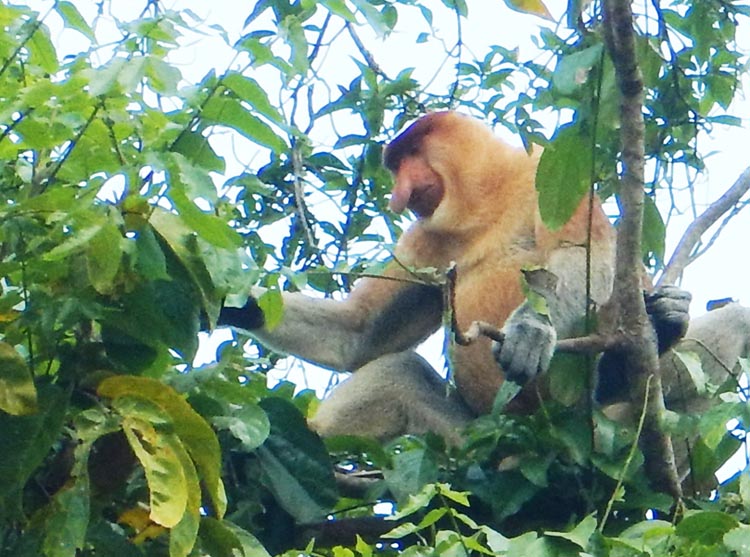
Boating up the Kinabatangan River as a tropical storm brews.
author: Kevin Curran
Conservation of the Kinabatangan River Corridor
The Kinabatangan River is a 560km river running through the Malaysian state of Sabah on the island of Borneo. The lower 100km of this river flows through a densely forested floodplain that is teeming with exotic plants, tropical birds and rare primates.
Unfortunately, the forest surrounding the Kinabatangan River has been under threat of development since the 1950s. The lush, alluvial floodplain lends itself well to agriculture, which has created substantial economic pressure to clear this land for cash crops. Thanks to great international effort, this forest and its inhabitants remain preserved to this day.
During the 1980s, Malaysia began rapidly converting much of its natural forests into palm oil plantations. Malaysia is currently the largest producer of palm oil in the world and Sabah is the largest palm oil producing region in Malaysia. This form of agriculture has contributed significantly to the growing economy of Malaysia, yet it has also destroyed a large portion of wildlife habitat.
Palm Oil (Elaeis guineensis) is native to West Africa but has spread like wildfire in Southeast Asia. 90% of the world’s supply of palm oil is grown in Malaysia and Indonesia. Despite new vegetable and algae based oils, palm oil remains the cheapest vegetable oil to produce. It’s also an incredibly versatile oil. Palm oil is used in biofuels, butter, cosmetics, cooking oils, ext. Demand for the commodity is expected to rise rapidly. In response to this growing demand, local governments have set palm oil production targets to increase to 40 million tons by 2020.
In an attempt to preserve the Kinabatangan forests from encroaching palm plantations, the WWF-Malaysia (World Wildlife Fund) began to focus conservation efforts on this riparian zone back in the late 1990s. By 2005, the WWF-Malaysia, working with the Sabah state government, successfully set aside 26,000 hectacres of land. This conservation effort created the Kinabatangan Wildlife Sanctuary. This sanctuary status means this stretch of river forest is now off limits to the palm oil industry.
The wildlife sanctuary is called ‘The Corridor of Life’, which is an accurate name. This thin slice of forest is overflowing with wild animals: orangutans, proboscis monkeys, elephants, langurs, gibbons, tarsiers, ext. In a strange twist of fate, the rise of palm oil farms in Sabah has enriched the Kinabatangan Sanctuary with primates and other forest creatures. As the surrounding forests, outside of the sanctuary were cleared and converted to palm farms, the animals had no other option but to crowd into the Kinabatangan River riparian zone.
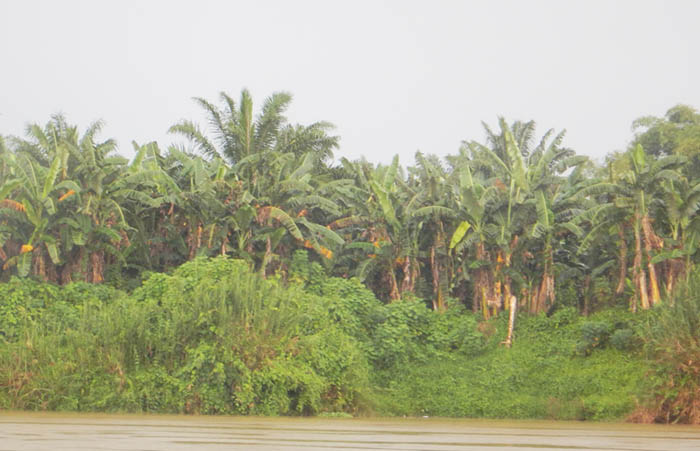
Palm oil plantations extend alongside the Kinabatangan river.
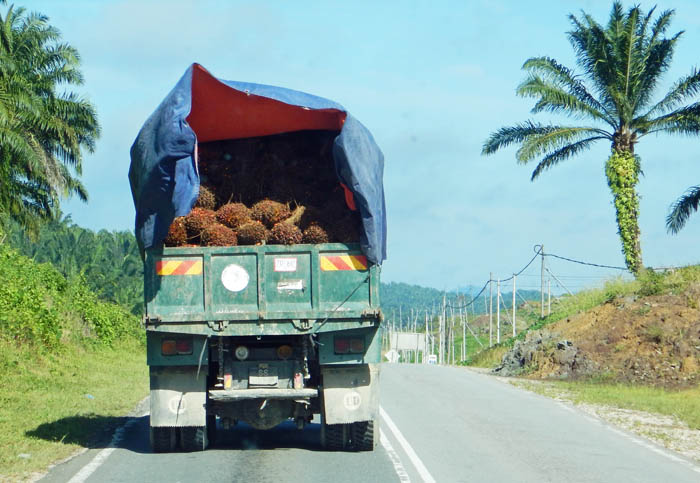
A truck carries a full load of palm oil fruits towards Kota Kinabalu.
Visiting the Kinabatangan
Here at EthnoHerbalist, we’re interested in the use of wild plants for medicinal or cultural use. We used the Kinabatangan as a base to explore the rich jungle flora of Sabah. We stayed at the Nature Lodge alongside the Kinabatangan River. This was a well-organized operation that provided lodging, good local food and a schedule of river trips and jungle hikes. Accommodations at Nature Lodge were organized through Kiwiana tours, who have an office space in Semporna.
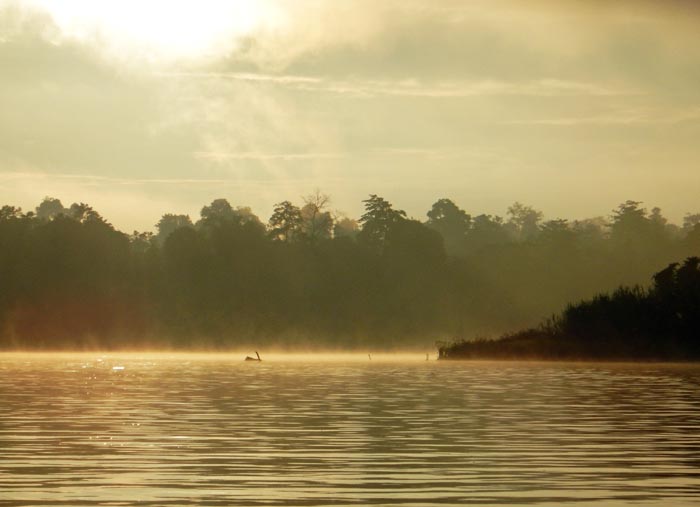
Ethnobotany of Sabah
Khairol was our guide on the Kinabatangan. He led us up and down the river in a narrow skiff with an outboard engine and he also guided our jungle hikes.
Khairol descends from a long line of Sabah natives that lived in the jungle. His grandparents never left the jungle and would exclusively use local plants to treat medical conditions. Khairol describes himself as slightly modernized, in that when he’s ill – he’ll make the day journey into the city of Kota Kinabalu to visit their hospital.
Khairol did an exceptional job of finding the plants of the Kinabatangan and describing how they’re used by local people. Here, he’s pointing out the giant bean plant. Khairol’s family breaks up the beans inside these enormous pods and makes soap.
Giant beans (Parkia speciosa) are indigenous to Southeast Asia. They belong to the Fabaceae family and bear flat edible beans that carry a smell similar to Shiitake mushrooms. As well as serving as soap, these beans are also commonly used as food in Indonesia, Malaysia, Laos and Thailand.
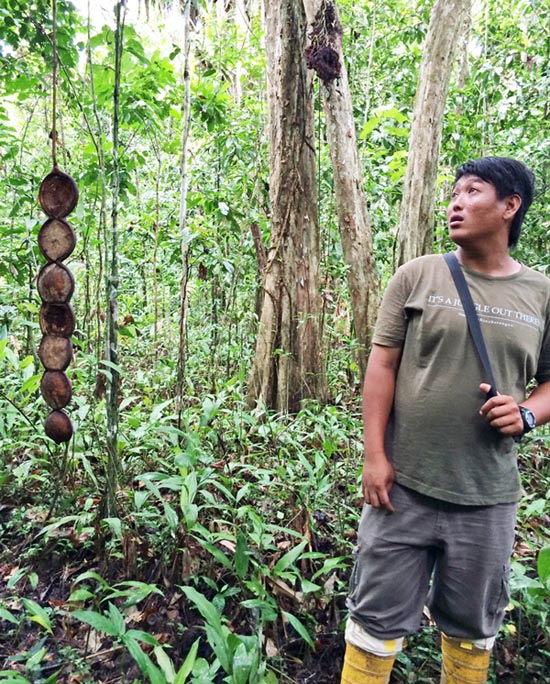
Khairol and the giant bean pod (Parkia speciosa)
Wild Ginger family in Malasyia
The ginger family is a ubiquitous group of plants in SE Asia. They provide multiple uses for food and medicine. Khairol explained that his ancestors used ginger to suppress high fevers and abate stomach aches. They boil the ginger root in hot water for 15-20 minutes, then drink as tea.
This part of the world is famous for their abundant species from the ginger family, Zingiberaceae.
There are approximately 160 species of different ginger plants in the Indo-Malayan region.
This particular ginger plant is from the Curcuma genus. A closely related ginger plant, Curcuma longa, common name turmeric, is also found throughout the floodplain. The roots of turmeric are bright orange and, when ground into a powder – this spice adds the familiar flavor to Indian curry. Additionally, the roots of turmeric are used around the world as an anti-inflammatory.
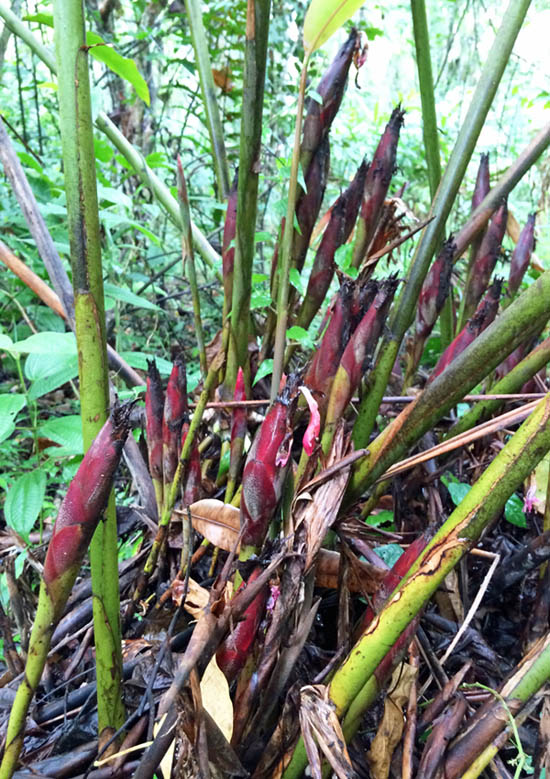
The Ficus tree of Malaysia
Khairol pointed out a giant Ficus (sp?) tree along the Kinabatangan River. This particular tree produces abundant white fruits that are rich in sugars and are eaten as a snack by the native orangutans. The trunk of this tree spreads out into enormous, buttressed roots that extend laterally across the forest floor. These buttressed roots add stability to the tree in the soft, damp rainforest soil.
Khairol mentioned that the broad wood from the Ficus roots is used as a musical instrument. Hitting the roots simulates a loud drum, in this way people can communicate from long distances.
Lianas
Lianas, or woody vines, are abundant in the Sabah forest. Many different plant families (about 2,500 species) produce these woody vines. They create an interwoven network of plant material that interlaces the rainforest canopy. These plants begin their life as small vines growing along the forest floor, they then find nearby trees and use them for support. Eventually, the vines thicken and grow up into the top section of the forest canopy. Since they remain rooted, they don’t take any water from the plants that support them.
The indigenous people of Sabah, cut up sections of lianas and built furniture from the thick strands. The famous Rattan chairs are constructed from liana vines.

The thick, buttressed roots of the Ficus.
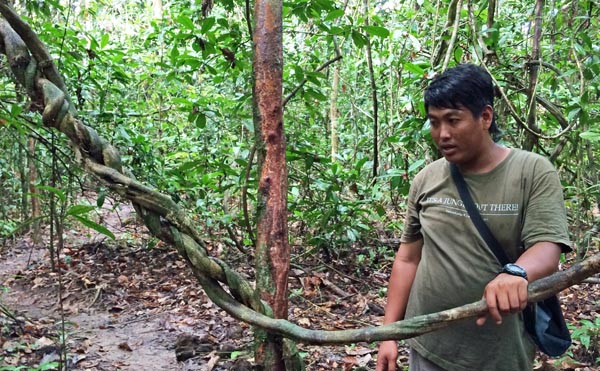
Liana vines form a tangled network on the forest floor.
The proboscis monkey is endemic to the island of Borneo.
This gorgeous primate is well represented along the Kinabatangan River. In fact, Sabah remains one of the few regions in Borneo where people can readily visit this rare primate. Clusters of proboscis monkey crowd into the riverside trees in the evenings to avoid predation by larger animals deep in the jungle. In doing so, visitors can comfortably observe the action at a distance while boating along the river.
Unfortunately, the population of this primate is heavily fragmented throughout Borneo. Habitat loss has led to a 50% population decrease in the past few decades.
The proboscis monkey is currently listed as Endangered by the IUCN.
Let’s hope that wildlife sanctuaries like the Kinabatangan ‘Corridor of Life’ continue to preserve wild habitat in Southeast Asia. If managed properly, future generations will be able to visit this part of the world and see these wild animals in their native habitat.
